► 1 Series returns for a fourth generation
► BMW’s latest interior design adopted
► Still the premium hatch for keen drivers
If you’re shopping for the best small family hatchbacks and driving pleasure is a top priority, the BMW 1 Series has always been a top choice. Even with BMW’s never-ending onslaught of new SUVs, the 1 is still its most popular new car in the UK, which is at odds with the rest of Europe where the X3 rules supreme.
Brits especially love a premium hatch with an upscale image that says lots about its owner, and that plays beautifully into the 1 Series’ hands. Up to the end of October 2024, it was the on the cusp of the Top 10 bestsellers list, outselling former big names such as Vauxhall Astra and Ford Focus.
Such is its popularity, BMW is skipping the usual facelift and diving straight in with a new generation only five years since the previous car debuted (a short cycle for this firm), though it feels more like a significant facelift. Think Mk5 Golf into Mk6 and you’ll be on the right lines.
Despite the rise of crossovers, family hatchbacks – particularly at the posher end of the spectrum – continue to be big business, with the Mercedes-Benz A-Class and Audi A3 remaining its arch rivals. And with these only having small updates in recent years, the new 1 Series stands a real fighting chance of reigning supreme.
At a glance
Pros: Outstanding interior quality, great to drive, best infotainment of any small car
Cons: Small boot, ride is too firm, too much touchscreen interaction, limited engine choice
What’s new?
While this 1 Series might look more like a heavy facelift, BMW is labelling it as the fourth generation of its hit hatchback, which has amassed three million sales since its introduction.
There are some significant changes here, with the main one being its interior. The 1 Series is one of the last BMWs to adopt its ‘Curved Display’ layout, which merges the touchscreen and digital instrument cluster in one strip of glass, and runs on the firm’s latest operating system. Most interior switchgear is different to the old 1 Series too, and brings it up to modern BMW standards.
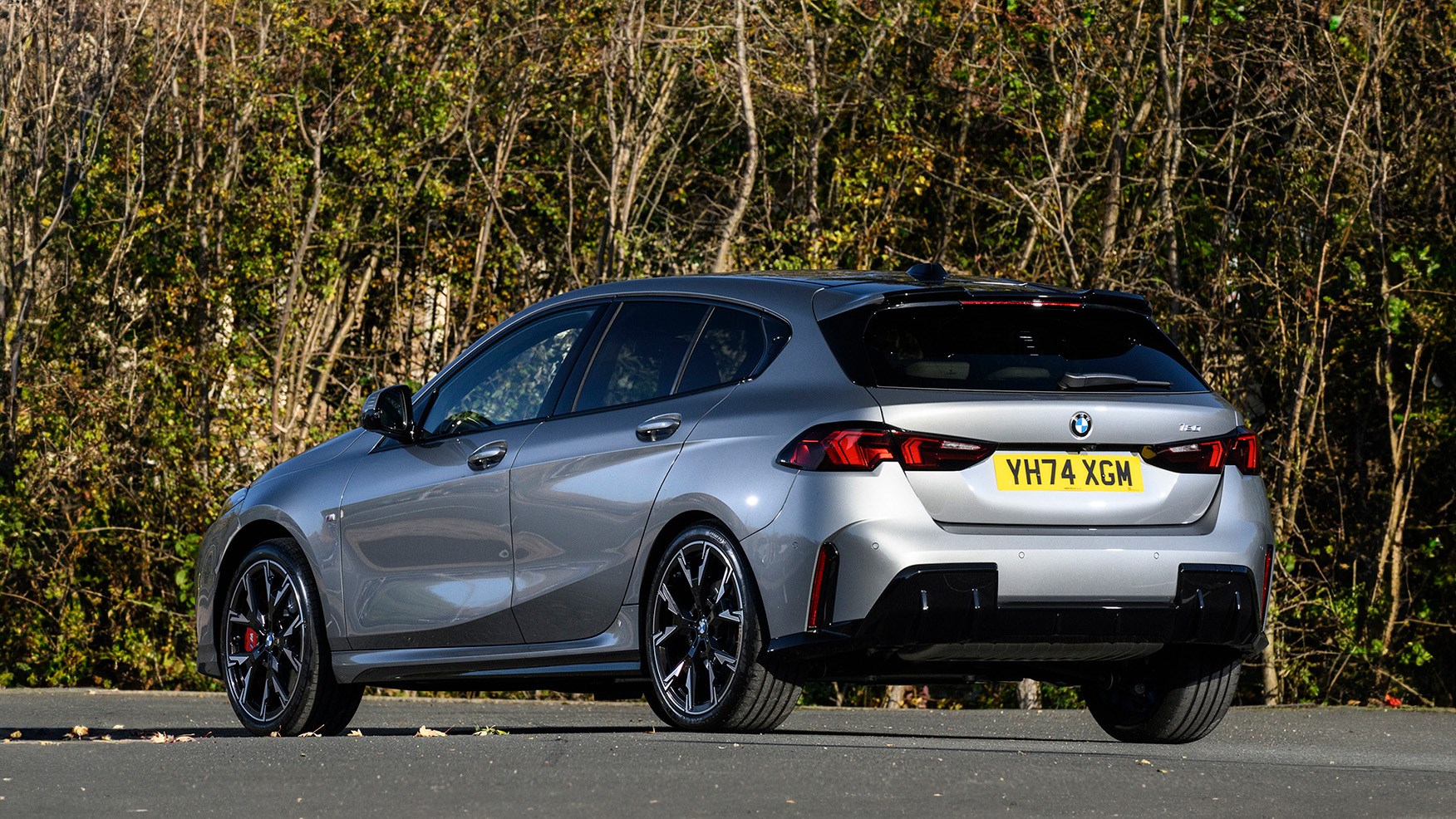
Under the surface there’s mild-hybrid technology for the first time and the design gets quite the overhaul. Key changes include a lower-looking front end courtesy of its smaller grille (a welcome change) that’s narrower but wider and has an illuminated surround on higher-spec versions. BMW knows its audience so there’s a black roof available for the first time as well as lots of ‘M’ accessories to dial up the personalisation.
What are the specs?
BMW’s UK division is drastically cutting down the number of derivatives of each car it sells, and despite the 1 Series’ popularity, it doesn’t escape this cull. Previously, this premium mainstay was available with a wide range of petrol and diesel units, but now only two engines are offered – the 120 and sportier M135, which we’ve reviewed separately. Note the lack ‘i’ at the end of their names (e.g 120i), with this naming strategy being rolled out across all new BMWs, starting with the 1 Series.
The 120 is a 1.5-litre three-cylinder unit that adopts a 48-volt mild-hybrid system from the related BMW 2 Series Active Tourer and X1, putting out 168bhp and 207lb ft of torque, enabling a 0-62mph time of 7.8 seconds and 140mph top speed. All new 1 Series models also use a seven-speed dual-clutch automatic transmission and front-wheel-drive – you might remember the backlash from the previous car when BMW decided to abandon rear-wheel-drive, not that it’s made the slightest impact on sales.
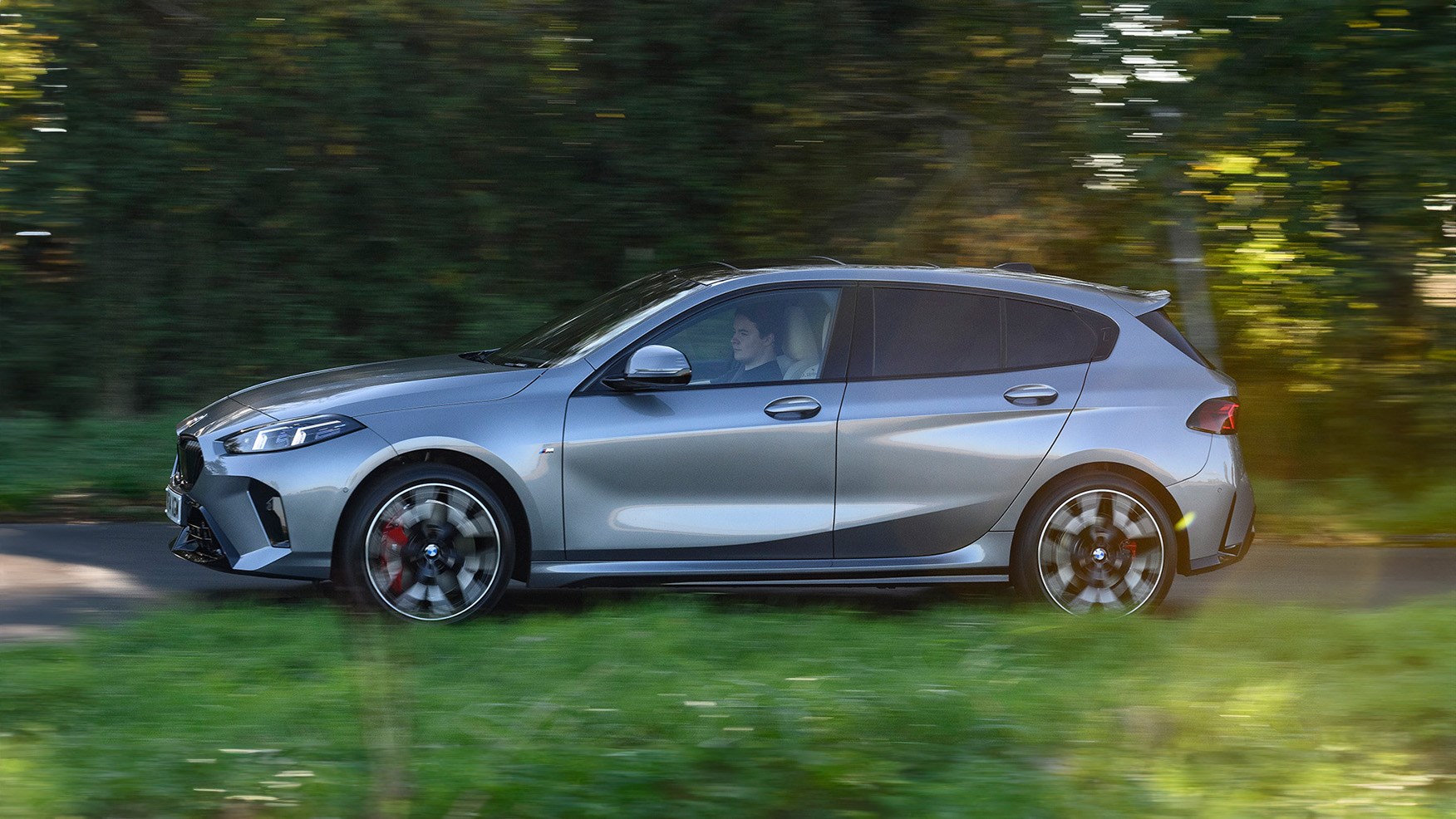
Despite the lack of diesel in the new car, the 120 should still prove relatively frugal, with BMW claiming up to 52.3mpg and 121g/km CO2 emissions.
How does it drive?
Even with the previous generation’s switch from rear- to front-wheel-drive, the 1 Series still impressed with how it drove. This new model is no different, and even this entry-level 120 model delivers, with poise that rivals from Audi and Mercedes-Benz just can’t match. The steering has more feel than is customary in this class, and revisions to the chassis make it keen to turn in, with lots of grip.
The 120 has great all-weather grip and traction that doesn’t feel too dissimilar to the all-wheel-drive M135, and on sweeping bends, is easy to place and make progress. The good news is that if you’re looking for a good B-road thrash, the 120 is still the best option in its class, although BMW’s thick-rimmed steering wheel (fitted to M Sport models) remains a bone of contention.
In terms of performance, it has more than enough pace for most scenarios, with plenty of poke for overtaking and getting up to speed on motorways. It needs winding up to get the best out of it, but as it’s particularly smooth and refined, that’s no hardship. It also lacks the coarse nature you get from a similarly-powerful A-Class or Audi A3, which is no bad thing.
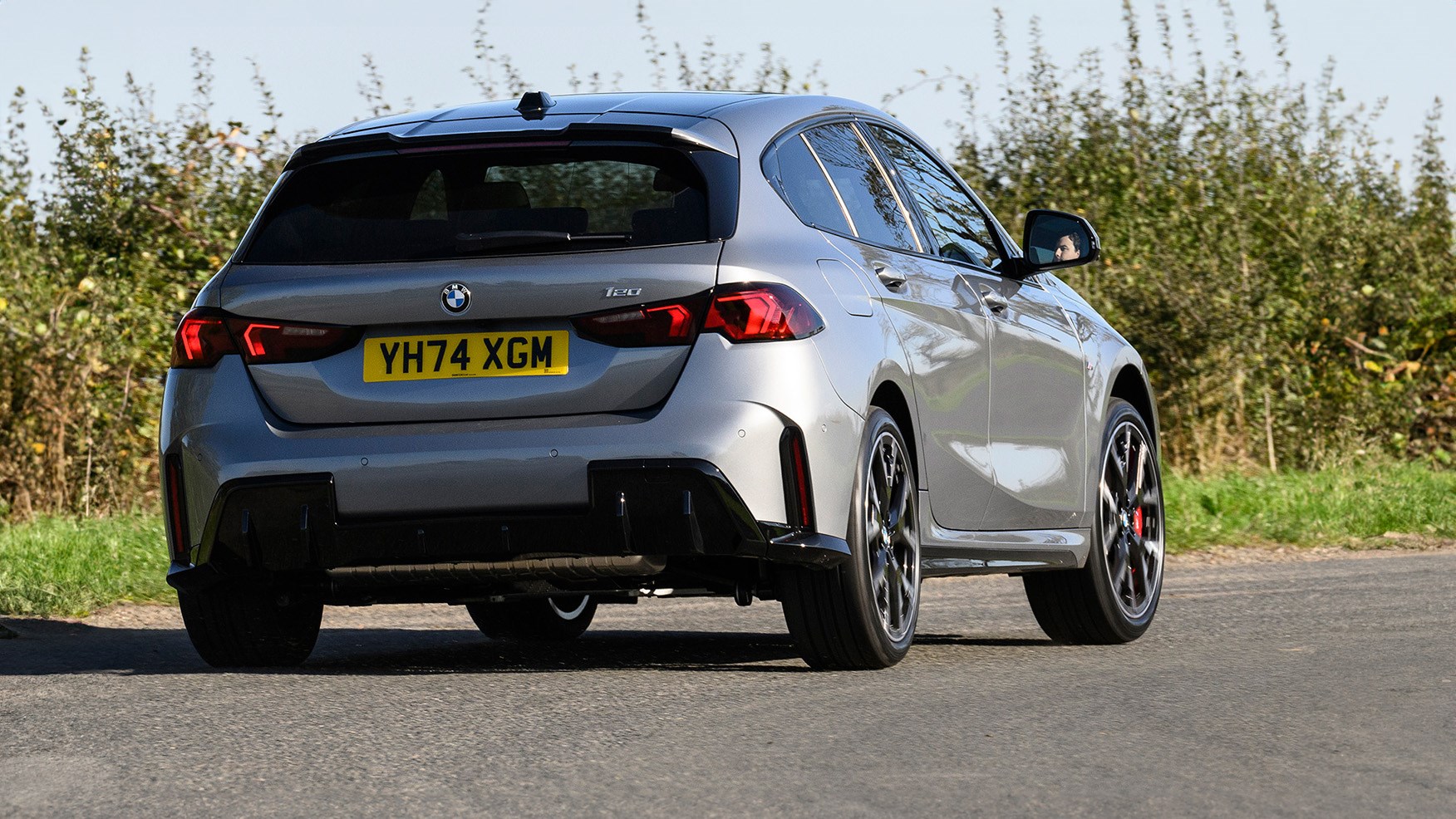
The biggest gripe is the ride, which is stiff legged and feels too firmly damped, allowing for too much vertical joggling on uneven roads. Even on Germany’s smooth roads, it was uncomfortable, but here in the UK in certain situations, it borders on the atrocious. Never does it settle down, and even on the motorway, you’ll be constantly reminded of this car’s sporting intentions.
Choosing adaptive M suspension (standard on the M Sport and M135) is always a good move. Opting for the entry-level Sport trim and sticking with the smallest alloys will prove the way to go for maximum comfort, but we’ve yet to try one in this spec.
What’s the interior like?
The biggest change for this new 1 Series is unquestionably its interior, which takes a big technology step up compared to its predecessor. The key addition is the implementation of the Curved Display infotainment system, which seriously modernises the 1’s cabin. While the loss of a rotary iDrive controller is a genuine disappointment, and a consequent over-reliance on the touchscreen for basic heating and lighting functions, BMW’s infotainment is one of the best around. The screen is clear, responsive and with easy shortcut functions to avoid meandering through sub-menus.
Considering this is BMW’s entry-level model, the quality certainly never feels that way. Soft-touch materials are used throughout, with fancy backlit multi-coloured lighting in the dashboard trim that elevates the 1 Series’ cabin further. This changes colour depending on the drive mode, but also for warnings, such as the exit monitor that stops you opening the door into a cyclist, for example.
Where the 1 Series falls short is interior space. It’s never been an especially roomy car but if you opt for a model with the mild-hybrid system (which it will be if you don’t want the sporty M135), you lose most of the boot underfloor area and it reduces from 380 litres to 300, which is less than many superminis. Rear-seat space is also not all that generous, with a particularly narrow entrance that can make getting in and out awkward – our six-foot tester looks very nonplussed about spending time here. There are far roomier hatchbacks if that’s a top priority.
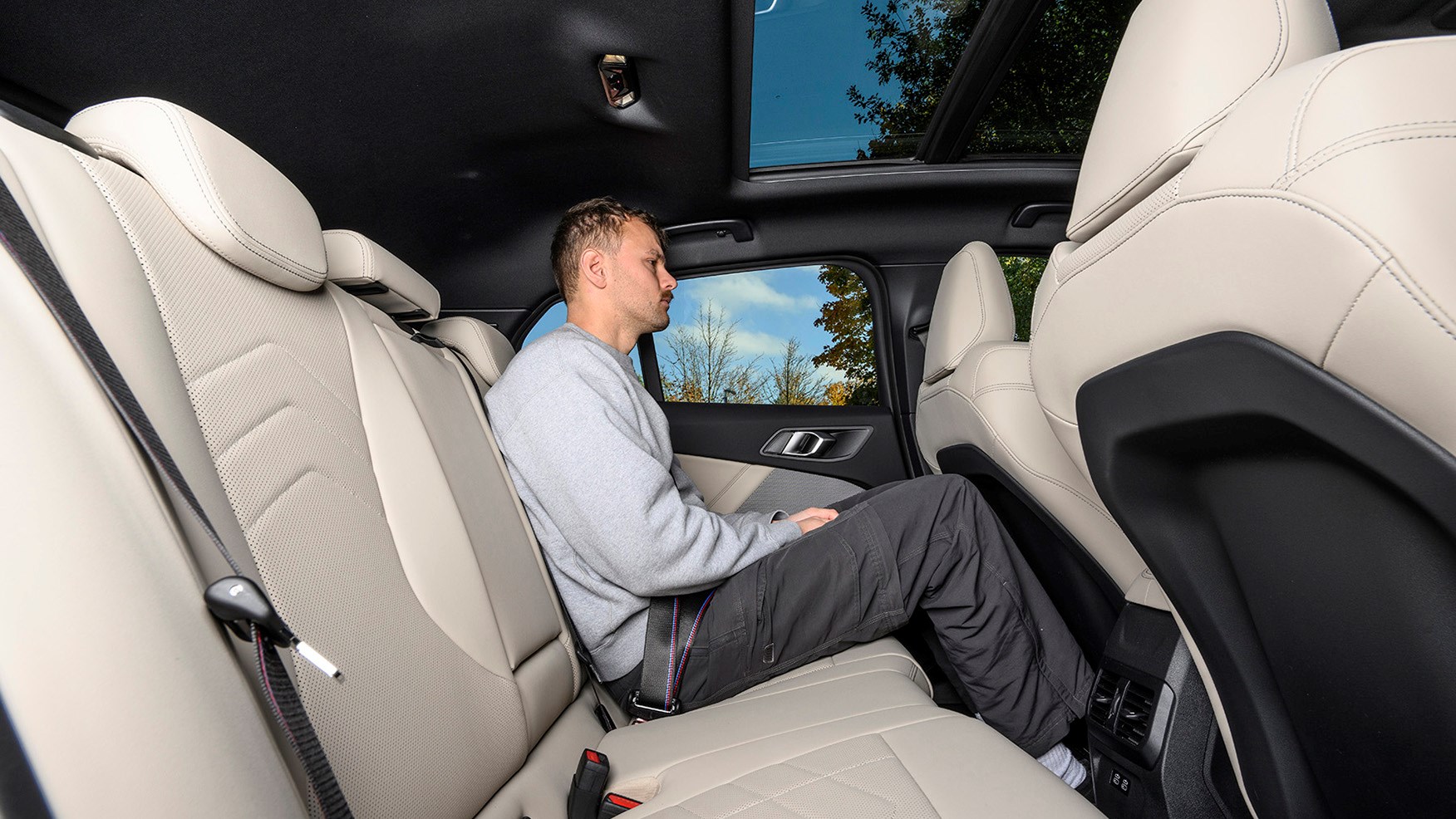
Before you buy (trims and rivals)
With BMW cutting back the number of versions available, the 1 Series’ £31,065 starting price suddenly looks quite expensive. While the cheapest new Audi A3 and Mercedes-Benz A-Class start from less money, if you find a like-for-like version to the 120, the BMW actually stacks up better in terms of value.
BMW has scrapped the entry-level SE trim, with a choice of Sport and M Sport grades. Standard equipment is reasonably generous, including the Curved Display as standard, heated front seats and a reversing camera.
M Sport costs an additional £2000 and adds larger 18-inch alloy wheels, adaptive suspension, a sportier bodykit and new sport seats that aren’t particularly comfortable.
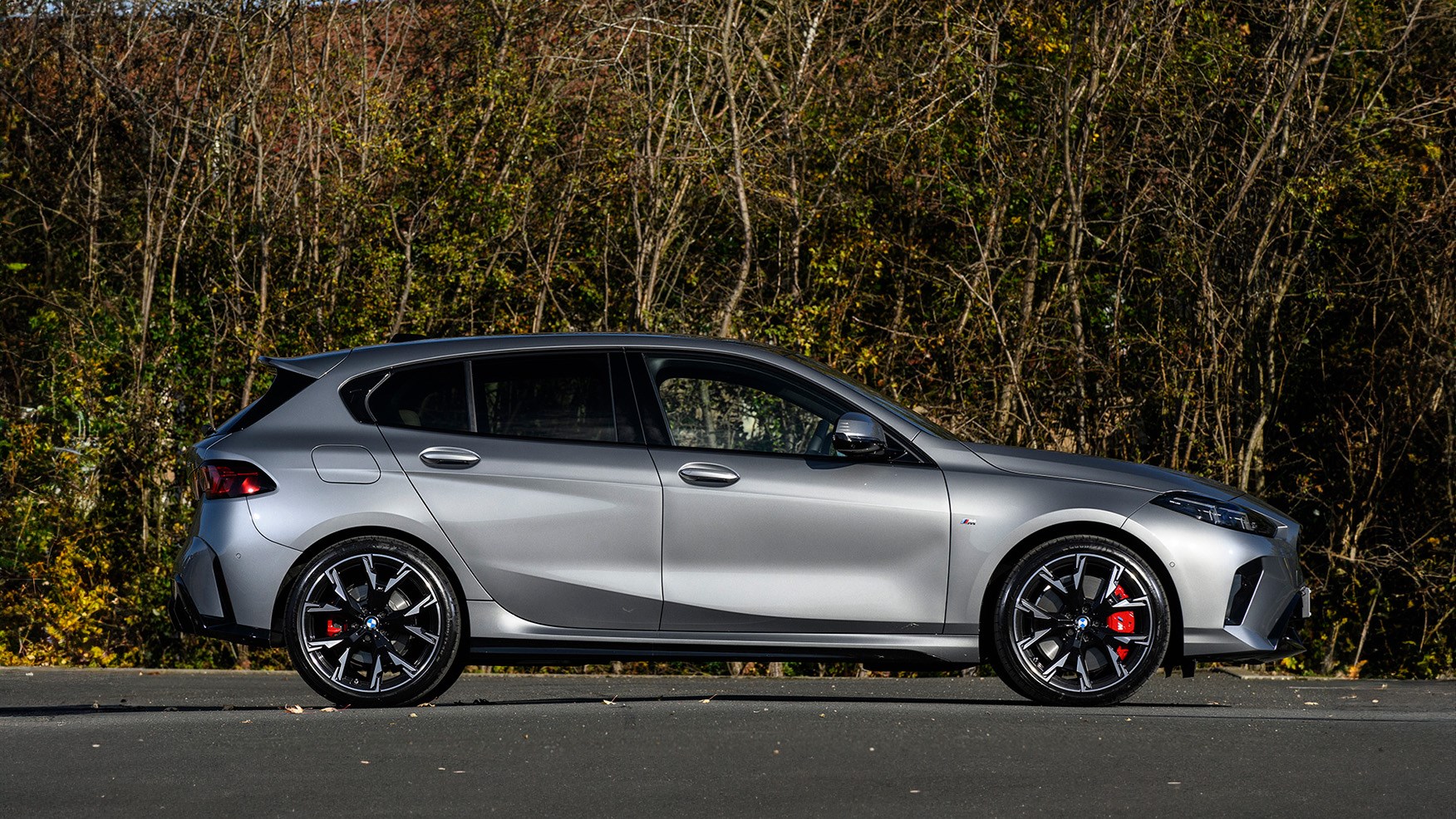
Verdict
If you’re looking for a premium hatchback to make you feel good about your station in life, the new BMW 1 Series more than delivers. Its new interior and impressive technology feel steps ahead of an A-Class or A3, and it remains the best to drive out of the trio, too.
But the ride quality will likely prove more of an annoyance on UK roads, and the limited engine range means we can see buyers favouring the Audi and Mercedes over it, given they are available with a wider range of petrol and diesel engines, as well as a plug-in hybrid.
Specs and prices for BMW 120 Sport